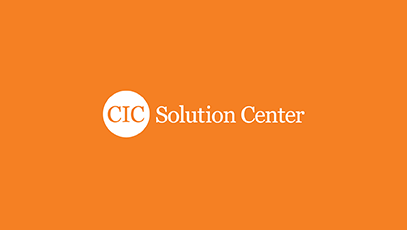The assessment tools on this page are most often used within a course, across multiple sections of a course, or across multiple courses that have similar assignments or goals. They work well in these settings because more intensive work is required to review and process the data than for a measure like a standard survey. These measures could also be used in other cross-curricular programs, internships, or portfolio projects.
Rubrics
Rubrics are quite useful for assessing writing assignments or presentations, particularly when more than one person will be involved in the assessment. Using a rubric helps ensure consistency across graders and time.
If vocation-related thinking is one thing being assessed from a larger assignment, the rubric can be simple. The following rubric from Calvin University is used across multiple courses where reflection on vocation is one of multiple learning goals that may be assessed in a particular assignment.
Prompt: Describe how your own sense of vocation relates to [the big question discussed in class].
| 1 (Developing) | 2 | 3 (Competent) | 4 | 5 (Excellent) | |
|---|---|---|---|---|---|
| Vocational articulation | Student expresses vocation narrowly in terms of jobs | Student expresses a narrow but compelling sense of vocation in terms of long-term career goals | Student expresses a broad articulation of vocation as an enduring commitment in multiple spheres of life |
Rubrics can also be quite comprehensive, particularly if they are meant to cover the entire breadth of an assignment. Below are three additional examples of more extensive rubrics that could be used for the assessment of classroom or program projects.
Vocation rubric from University of Dayton
This rubric addresses themes of career development, personal development, and a sense of service and responsibility. The rubric is used to assess students’ ability to generate vocational plans that account for living lives of service in community.
Community Rubric from University of Dayton
This rubric does not address vocation directly, but assesses themes of collaboration, common purpose, resolving conflicts, and global citizenship. All or many of these areas may fit with the vocation-related goals of some programs.
Vocation Rubric from Blackburn College
This rubric was designed for a general education course and addresses examining calling and purpose as well as reflections on leadership and the common good. Note that the rubric includes definitions of key terms, which increases the usability of the rubric by multiple instructors.
If you think you may need to develop a new rubric for your course or learning goal, you may want to consider starting with either a discussion of writing samples or a checklist to help you clarify questions and parameters to be included in your rubric.
Discussion of Writing Samples
Discussing writing samples with a small group of instructors or faculty works well if a course has multiple sections or it is a senior level course of interest to the department or program. The process of discussing a writing assignment together can also help solidify questions or categories for the future development of a rubric.
Example Process for a Writing Sample Discussion
- Grade assignments for students as you normally would
- Choose strong/average/weak representatives from the pool of graded assignments (1-2 of each)
- Group reviews the representative assignments alongside data on how many students were in each category. Discussion questions could include:
- Is this what we would expect from students at this level?
- Are we happy with how they explore or explain vocation?
- What else would we hope to see in their understanding of vocation?
- Is something missing from this writing? Is it because the students can’t meet the expectation or because the assignment doesn’t capture their thinking well?
- Report: summary of discussion and plans for action in response to discussion
Checklists
A checklist is a set of expectations or items that you would look for in an assignment. When grading, you determine if something is present or not in the assignment. You can decide if the threshold is met when a student includes all the items on a checklist or a particular number of items. If you are starting assessment on a project, a checklist can be a good precursor to building a full rubric.
Example of checklist for a portfolio that includes vocational discernment
- Discusses knowledge and skills needed to advance in professional development
- Identifies values necessary for profession
- Demonstrates passion to be successful in the profession in reflection on experience
- Discusses commitment to life-long learning
- Portfolio has at least 3 examples of service to others
- Reflection on responsibility to participate in service is present
Images
In a smaller class setting, you can assess thinking around vocation topics using prompts to create images. This works well if vocation is not the primary or only topic of the course and you are interested in how students thinking my changing for your own assessment purposes. You can ask students to draw (and possibly share pictures with each other) at the beginning of the semester and then repeat the same (or a similar) prompt later in the semester.
Example prompts:
- Draw a picture showing communities around you and how you belong to them
- Draw a picture showing what you think you might be doing 5 years from now
Assessment shortcut: copy pictures the first time students submit and have the students revise the same picture later in the semester. This makes it easy to see how student thinking has changed over time.
Self-Assessment Assignments
Self-assessments work well in a smaller setting where you have the capacity to review student reflections. The exercises can be administered on a single occasion or more than once if you are interested in growth over time. You will gain insight into unique perspectives or ways your students are thinking about things through this type of assessment. Keep in mind that we aren’t always reliable informants about our own inner states and dispositions and are susceptible to biases and blind spots. You may want to consider doing this type of assessment alongside other forms of assessment.
A self-assessment survey is usually constructed with first-person statements. You can create your own items that closely align with your goals or choose to use standardized questions, which may provide you with more reliable results. After students have completed the survey, ask them to do reflection on their own responses.
Example: Virtue Based Self-Assessment
Have students complete this virtue based survey (or a similar one that fits your learning goals). When students are done, ask them to reflect on the following:
- Which item on the list best characterizes your own thinking and why?
- How does this virtue tend to influence your thinking, either at school or in other areas of your life?
- What are some specific examples that support your response?
- How might the virtue you chose shape the way you participate in this learning community?
When students are done, they can share their reflections in a small group or a whole group reflection. Students then submit some evidence of their reflections to the instructor for review.
Surveys
You can use published surveys in your course. However, during a class meeting over the course of the semester, the timeline may be too short for impactful pre-post assessment data. If your goal is to see if students meet a threshold over the course of the semester, you can survey at the end of the semester. If your goal is to measure growth over the course of the semester, consider asking students about changes at the end of the semester. For example: How has your thinking changes as a result of [insert reading, topic, or discussion]? or What have you learned about [insert topic or question] this semester?
For example:
Please rate your ability to articulate the role of your discipline in service to people and society.
- Now (at the end of the class): very poor, poor, fair, good, very good, excellent
- At the beginning of the semester/class: very poor, poor, fair, good, very good, excellent
Next Steps
If you would like to learn more about designing vocation-related assessment in your courses or are interested in setting up a workshop on your campus, please contact Rachael Baker, associate director of NetVUE, at rbaker@cic.edu.

To report a technical problem with the website, or to offer suggestions for navigation and content issues, please contact Alex Stephenson, NetVUE communications coordinator, at astephenson@cic.edu.



